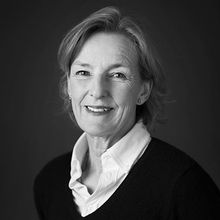Hilma af Klint
"Morgon" (Morning)
Signed H. af Klint. Watercolour 13.5 x 22.5 cm. Bukowskis would like to thank Johan af Klint, Ph.D. for information regarding this work.
Provenance
Acquired at auction in the mid 20th century.
Thence by descent in the family.
More information
Hilma af Klint (1862-1944) has taken the art world by storm - many decades after her death. Today, she is one of the world's most beloved artists. Born in Stockholm, Hilma af Klint studied at the Royal Academy of Fine Arts. She established herself as a respected artist, exhibiting figurative paintings. Remarkable from an artistic perspective is the evolution Hilma af Klint's style of painting up to 1906. Until the age of 40, she mainly paints portraits and landscapes, botanical studies and commissions. Without any progressive transition, she then switches from traditional painting to creating in a free and unconventional way.
After graduating from the Academy of Fine Arts in 1887, she shared a studio but two students in the so-called The studio building at Hamngatan 5 at Kungsträdgården in Stockholm. The watercolor titled "Morgon" is an early work, a harmonious summer landscape from the island of Adelsö, where she grew up. The artist has noted the price of 40 Swedish crowns in pencil verso. The style is naturalistic and gives no indication of the sensational transition to abstract painting that was to follow.
Originally a devout Christian she later became involved in spiritualism, and later followed a keen interest in the ideas of Rudolf Steiner's Rosicrucian theosophy and anthroposophy. These modes of spiritual engagement were popular across Europe - especially in artistic and literary circles. In 1896, she founded the informal group The Five, who perceived that they were in spiritual contact with The High Ones. Her mission to create the suite of Paintings for the Temple, executed between 1906 and 1915, would change her life. The abstract style of painting, loaded with symbolism was revolutionary and, in many ways, shocking. Hilma af Klint understood the uniqueness of her creation. She had a vision that her art would help to influence people's higher awareness, possibly even in the long run the entire society. However, she considered that her contemporaries were not mature. On the front page of her notebook from 1932, she noted a mandatory deadline - none of her works were to be shown publicly until 20 years after her death.
Now 90 years later, it is clear that Hilma af Klint has taken the art world by storm. From being virtually unknown, she has taken her place among the modern painters and her work is considered groundbreaking. She has, long after her death, redrawn the map of early abstract art, both in Sweden and internationally.
Hilma af Klint's dream of a spiral-shaped venue that would house the Paintings for the Temple has in a way come true. In 2019, the exhibition Hilma af Klint - Paintings for the Future opened at the Solomon R. Guggenheim Museum, New York. The celebrated exhibition attracted a record crowd of 600,000 spectators who patiently queued outside the characteristic spiral-shaped building.
Today, Hilma af Klint is more relevant than ever, her life and work has been celebrated in exhibitions, films, VR experiences and now most recently in an NFT-series.
Artist
Hilma af Klint (1862-1944) was a Swedish painter, theosophist and pioneer within abstract painting, and already in 1906 had created an abstract visual language. This was several years before Wassily Kandinsky, Piet Mondrian and Kazimir Malevitj who are still considered the forerunners of abstract art in the 20th century. Klint began her artist training at the Technical School in Stockholm (now Konstfack), where she also took lessons in portrait painting. After her studies, Klint acquired her own studio by Kungsträdgården where she painted and exhibited landscapes in naturalistic styles.
It was during a trip to Switzerland where she met Rudolf Steiner and was taken by his anthroposophical ideas and thereafter developed a strong interest for the occult. During séances, she received messages, which she transformed into abstract paintings. In 1986 Klint showed her abstract work for the first time in the exhibition, ‘The Spiritual in Art’, Abstract painting 1890-85, in Los Angelese. This exhibition came to be Hilma af Klint’s international breakthrough.
With a solo exhibition at the Modern Museum in Stockholm, Klint started a new phase of her artistic career. This became the most wrote about exhibition in the history of the Modern Museum and made Klint into a well-known name worldwide. Since 1972 her abstract work has been managed by the Hilma af Klint Foundation. The Modern Museum in Stockholm has a room dedicated to Hilma af Klint in their permanent exhibition, where the works shown are regularly rotated. She is even represented by the National Museum, the Royal Library, the Maritime Museum, the Nordic Museum and Uppsala’s University Library.















































